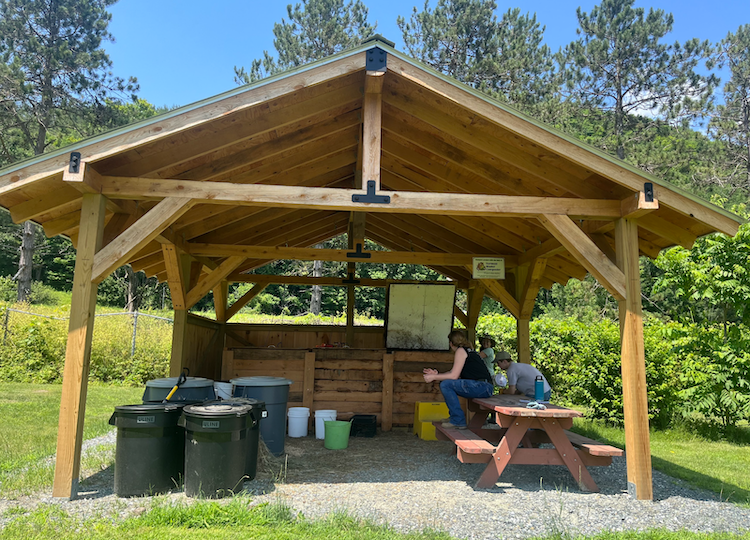Teen Fellow Blog: Upper Valley Super Compost Project
Finn Gleeson, 2024 Teen Farm Fellow, graduated from Hanover High School this past June. Over his last few summers, he has enjoyed working for the Upper Valley Trails Alliance and Coyote Hill Mountain Bike Camp. Finn likes to bike, nordic ski, read, and spend time with his dog. He joined Cedar Circle Farm & Education Center’s Teen Farm Fellowship program hoping to do hands-on work and expand his knowledge on the world of agriculture and luckily this is just what he’s done!
Upper Valley Super Compost Project at The Sharon Elementary School
The Sharon Elementary School is one of 24 schools participating in the Upper Valley Super Compost Project (UVSCP). Designed by food systems educator Cat Buxton and her colleagues, the program aims to engage K-12 students in living compost work, which will benefit the school’s environmental health, create closed-loop systems (reducing the financial costs of following the Vermont Universal Recycling Act), and advance local knowledge on food citizenship and ecology. The developers estimate the program will collectively divert and recycle approximately 200,000 pounds of food waste across the participating towns.

The Cedar Circle Teen Farm Fellows were able to visit Cat at the Sharon Elementary school to engage in a service learning project. Cat began the afternoon by showing us the elementary school’s new compost facility, situated next to the student-run garden. (A similar structure will be built for every school participating in the Super Compost Project.) There is a tall wooden pavilion, under which three massive covered bins sit, with a pulley system to lift the lids off of each bin. While the right-most bucket contains barely a foot of cool material, the center one is full to the brim with warm organic matter, and the left-most is about half full; the thermometer sticking out of the last bin reads 170°F.
Cat explained the basics of the system to us: the compost is moved from bin to bin to facilitate the aerobic breakdown necessary to create the most beneficial soil amendment. She laid out the “recipe” that she learned from her Vermont Master Composter training (shown in the image below). She showed us how the walls of the bins have been built to insulate the compost, but are also removable to simplify the turnover process. Next, we took up shovels and pitchforks to clean out Sharon Elementary’s old, far smaller composting system. The bins here were built onto the side of a shed and on top of a concrete slab, leading to molding and improper drainage. We loaded up this compost in the back of Cat’s truck to take to the Sharon Food Justice Garden, which we visited later in our fellowship to complete another project (see Food Forest post).

Although composting is a concept that much of the Upper Valley community is aware of, it is far more complex than many of us realize. Not only does it represent its own intricate field of biochemistry, but compost will play an essential role in increasing the environmental sustainability of our food systems. Proper compost management can decrease greenhouse gas emissions, increase soil biodiversity, prevent water pollution, and more. Composting is also a socially-sustainable practice as it creates connections between distinct community members. For example, Sharon Elementary sources manure from a local horse barn that brings together community volunteers to turn compost, and then uses that compost to fertilize its own educational garden. Additionally, the integration of living compost systems increases economic sustainability by reducing costs for waste management and fertilizer inputs. The multifaceted solution that composting offers inspired me to look at how Cedar Circle Farm can improve its own compost system.
Learn more about the Upper Valley Super Compost Project here.


_BDP-4552_1600_600_90_s_c1.jpg)





